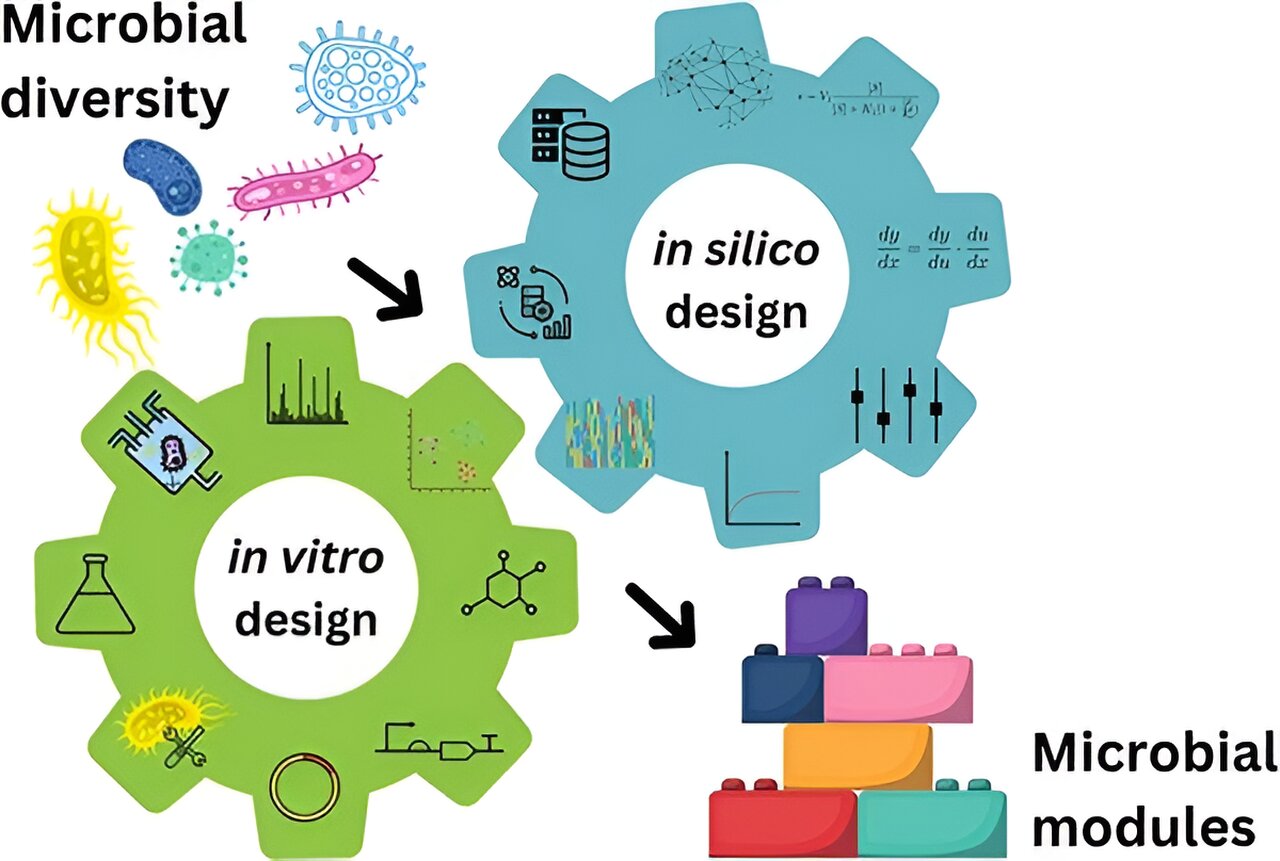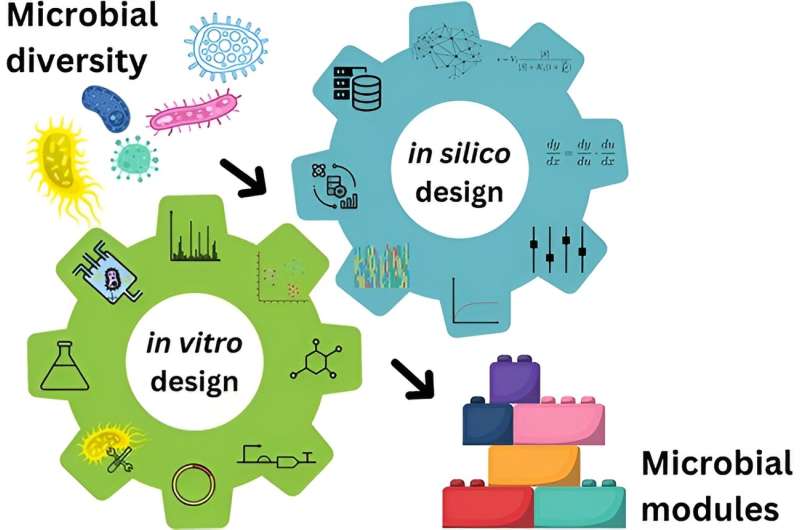

How can computer models help design microbial communities? A research team comprising members from Aachen, Düsseldorf and East Lansing/U.S. examined the development perspectives of so-called synthetic biology. In an article published in the journal Synthetic Biology, they explain why computer-aided biology has an important role to play.
Communities of microorganisms—bacteria, fungi and viruses—can be found everywhere. In organisms, they fulfill a variety of functions. For example, the microbial community in the human gut, the so-called microbiome, is essential for metabolism. The microorganisms are needed to unlock many nutrients and make them available to the body. If the composition of the microbiome is incorrect, this can cause significant damage to the organism as a whole.
The interdisciplinary research field of “synthetic biology” is also increasingly focusing on these microbial networks. The aim is to use engineering principles to design and construct new biological systems and organisms that can perform specific functions. Genetic engineering methods help modify and transfer DNA and RNA across different organisms.
Synthetic biology initially focused on individual synthetic organisms, but its potential for designing highly complex networks such as artificial communities of (synthetic) organisms is becoming increasingly obvious.
Such artificial communities offer a wide range of potential application areas including the mitigation of disease, increased crop productivity or the production of valuable biomolecules.
Researchers from the CRC1535 “MibiNet” have been inspired by natural lichens, in which phototrophic cyanobacteria or algae establish a close symbiotic relationship with heterotrophic fungal partners. They want to develop the microbial networking manifested here as an example for future applications.
The research findings are intended as a contribution toward establishing interdisciplinary methods and technologies for CO2-negative processes, i.e., processes that actively capture CO2 from the atmosphere. In a further research project—ACCeSS—the intention is to harness energy from the sun to treat wastewater.
In the journal article, researchers from Aachen University of Technology (RWTH), HHU and Michigan State University (MSU) in East Lansing in the U.S. outline this future direction of development for synthetic biology. They emphasize the role of computational biology as an integral component, which can greatly simplify the design of artificial communities.
Professor Dr. Ilka Axmann from HHU, corresponding author of the study, says, “We propose a shift in perspective from single-organism centered approaches to emphasizing the functional contributions of organisms within the community.”
With regard to the research approach, she adds, “The focus lies on the function the community as a whole should perform. It is irrelevant which specific organisms it contains: Organisms are merely the chassis containing necessary metabolic pathways, providing required functional roles.”
Dr. Daniel C. Ducat, Professor of Biochemistry and Molecular Biology at MSU states, “Increasing numbers of examples show that, although the specific species composition of complex microbial communities can change over time or at different locations, the specific functions of the community are stable on a larger scale.”
Dr. Anna Matuszyńska, lead author of the study and junior professor of computational life science at RWTH, says, “Computational biology can help support modularization in synthetic biology, which is desirable as it would reduce complexity and create versatile, scalable frameworks that can be tailored to specific functions within biological communities.
“With the help of mathematical models, we can predict and optimize such systems to ensure they work reliably and efficiently. The intention is to use this ‘in silico design’ in the earliest stages of developing a synthetic community.”
More information:
Anna Matuszyńska et al, A new era of synthetic biology—microbial community design, Synthetic Biology (2024). DOI: 10.1093/synbio/ysae011
Provided by
Heinrich-Heine University Duesseldorf
Citation:
Study highlights role of computational biology in microbial community design (2024, September 12)
retrieved 13 September 2024
from https://phys.org/news/2024-09-highlights-role-biology-microbial-community.html
This document is subject to copyright. Apart from any fair dealing for the purpose of private study or research, no
part may be reproduced without the written permission. The content is provided for information purposes only.